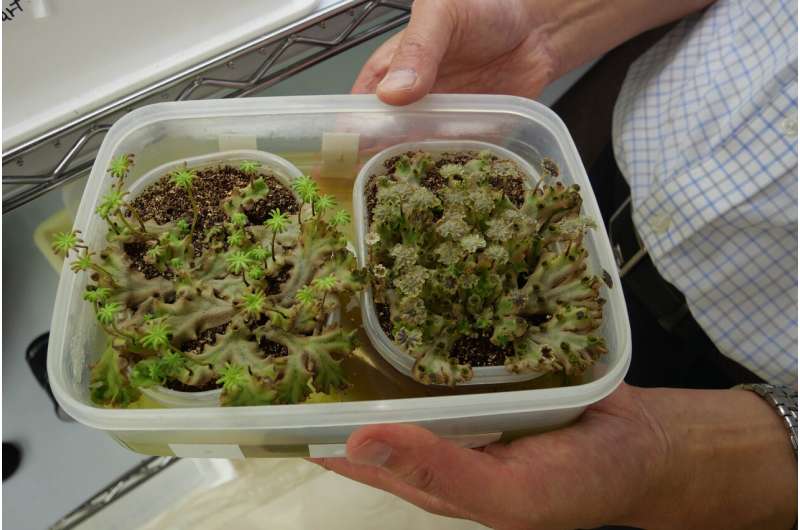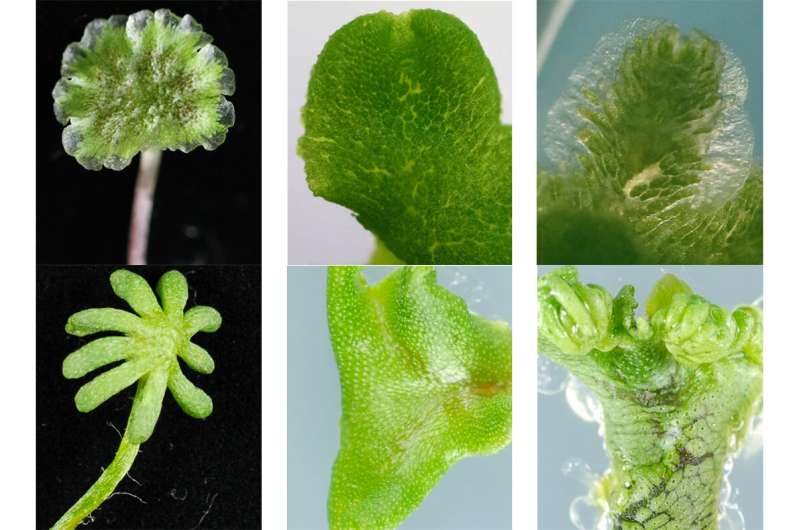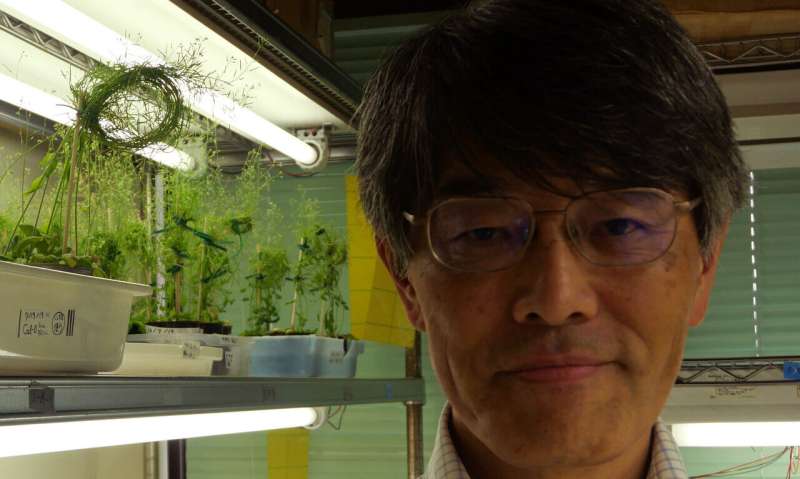Genes identified in early land plant descendant also found in modern crops

Since they first arrived on land, plants have likely been using the same genetic tools to regulate whether they grow bigger or reproduce. The discovery was made using liverwort, one descendant of the first plants to move out of the ancient oceans and onto land.
Liverworts grow all over the world and resemble moss, spreading on moist soil under some shade. Male and female versions of liverwort are recognized by unique, umbrella-shaped structures that shoot up from the base of the plant.
"Liverworts have the maximum power with the least structure," said Professor Yuichiro Watanabe from the University of Tokyo's Department of Life Sciences, an expert in plant molecular biology.
The liverwort genome is structurally simple compared to the flowering plants that are commonly used in research laboratories, like tobacco and thale cress (Arabidopsis). Flowering plants are evolutionarily "younger" plants than liverworts, with gene duplications and redundancies that make studying their genomes more complicated.
Despite that simplicity, the liverwort genome appears to have all the same life-cycle stages and powers to regulate them.
Genome similarities
The entire genome of the liverwort species Marchantia polymorpha was first sequenced in 2017 by an international team, which included several researchers who also participated in the recently published gene analysis.

When they examined the full genome, researchers discovered that even the simple liverwort has about 100 different types of a small molecule, called microRNA, which regulate the activity of other genes.
About eight of the liverwort microRNAs were nearly identical to known thale cress microRNAs. These eight microRNAs fascinated researchers because the ancestral plants that evolved into modern liverworts and modern thale cress split over 450 million years ago.
"So, why keep them? We want to know what those shared microRNAs are doing, and liverworts are now a convenient model for us to investigate," said Watanabe.
To get bigger or to reproduce
Most mammals, including humans, are born with the cells that they'll need as adults to produce their own offspring. Plants, however, develop their reproductive cells only after switching from the vegetative stage, when they grow new leaves or get bigger, to the reproductive stage.
One of the microRNAs that helps flowering plants control the shift to the reproductive stage is also one of the eight microRNAs shared between thale cress and liverworts. That microRNA is known to researchers as microRNA156/529.

To pin down the potential role of this evolutionarily conserved microRNA, Watanabe's research group created a genetically modified version of liverwort that lacked microRNA156/529. Those so-called microRNA156/529 knockout liverworts produced reproductive cells on their vegetative tissues rather than developing the normal umbrella-shaped reproductive structures that distinguish males and females.
"This was amazing to us. Those liverworts skipped some part of the reproductive process and the body itself becomes the reproductive organ," said Watanabe.
Identifying the same molecule with a similar role in the vegetative-to-reproductive switch in such different plant species reveals that microRNA156/529 and the other molecules it interacts with are part of an important control module used by potentially all land plants to regulate their reproductive timing.
Watanabe imagines that in the future, farmers could measure the amount of microRNA156/529 in crops to predict harvest times.
"We hope our results inspire others to develop new applications for plant reproduction," said Watanabe.
The study is published in Current Biology.
More information: Masayuki Tsuzuki, et al. 19 September 2019. An early arising role of the microRNA156/529-SPL module in reproductive development revealed by the liverwort Marchantia polymorpha. Current Biology. DOI: 10.1016/j.cub.2019.07.084
Journal information: Current Biology
Provided by University of Tokyo





















